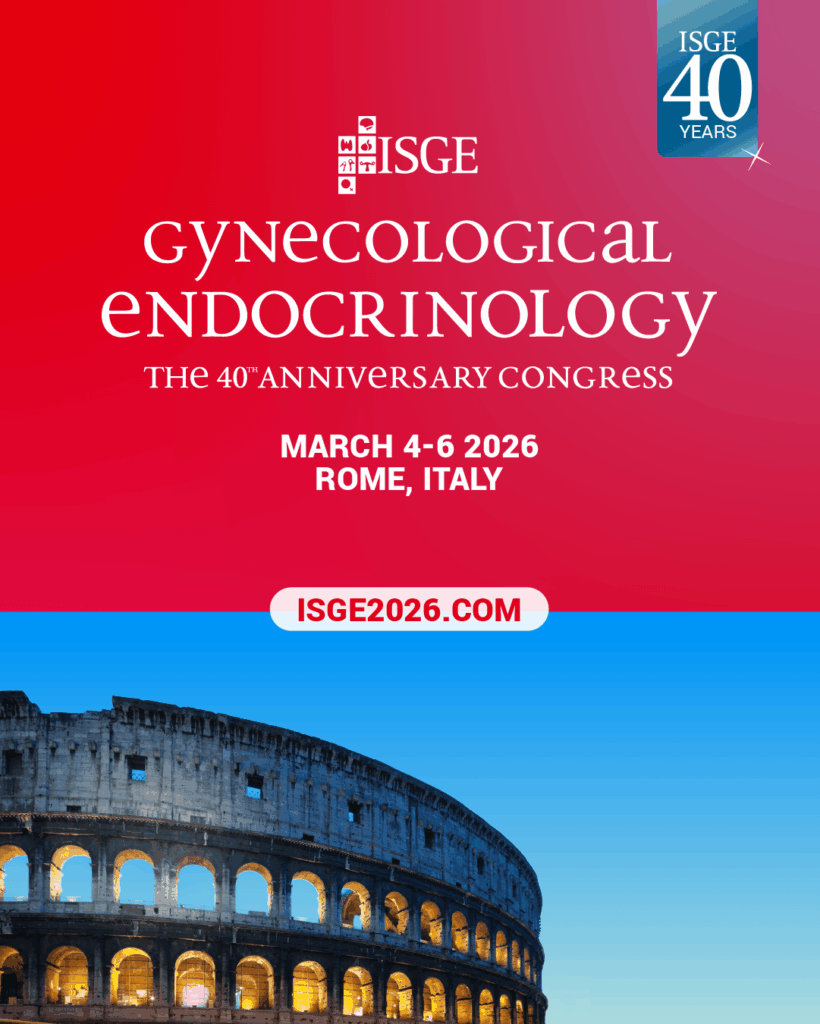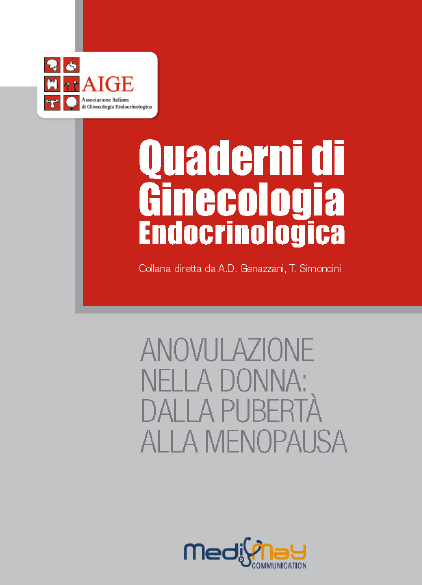-
Francisco Fábregues, Camil Castelo-Branco, Francisco Carmona, Marta Guimerá, Roser Casamitjana, Juan Balasch
The effect of different hormone therapies on anti-müllerian hormone serum levels in anovulatory women of reproductive age
Gynecological Endocrinology Apr 2011, Vol. 27, No. 4: 216–224
Abstract
Objective. To investigate the effect of oral contraceptives (OC), metformin and ovulation induction with gonadotropins on circulating anti-müllerian hormone (AMH).
Design. Prospective clinical study.
Patients. Thirty patients with PCOS (Group 1), 15 normogonadotropic anovulatory infertile women (WHO 2) (Group 2) and 15 normoovulatory control women (Group 3). Patients in Group 1 received OC (n = 12), metformin (n = 11) or no-treatment (n = 7) for 6 months. Ovulation induction with FSH or hMG was used in Group 2.
Main outcome measures. Total follicle number (TFN) and hormonal (fasting insulin and glucose, testosterone, SHBG, LH, androstenedione and AMH) measurements at baseline and during therapy.
Results. Basal AMH and TFN were higher in Groups 1 and 2 than in controls. Only TFN was significantly related to AMH level in Groups 1 and 2. AMH level was significantly reduced during OC treatment, and there was a trend for AMH decrease during metformin therapy. No significant changes in AMH level were observed during ovulation induction. TFN was the only parameter showing a significant positive correlation with circulating AMH over the 6-month treatment period in patients in Group 2.
Conclusions. AMH is an accurate marker of the antral follicle pool in WHO-2/PCOS women but the measurement of AMH is not likely to be helpful in the management of those patients.
-
Fábia Lima Vilarino, Denise Maria Christofolini, Débora Rodrigues, Angela Mara Bentes de Souza, Juliana Christofolini, Bianca Bianco, Caio Parente Barbosa
Body mass index and fertility: is there a correlation with human reproduction outcomes?
Gynecological Endocrinology Apr 2011, Vol. 27, No. 4: 232–236.
Abstract
Considering the existing conflicts about how an elevated body mass index (BMI) affects fertility, this study had the objective of evaluating the impact of overweight and obesity on the results of IVF/ICSI (in-vitro fertilisation/intracytoplasmatic sperm injection) performed at the Human Reproduction Centre of Faculdade de Medicina do ABC. Retrospective data from 208 IVF cycles of 191 women, performed at our laboratory from February through June, 2008, were used to calculate their BMI. On the basis of the results, the patients were divided into two groups: Group 1: BMI <25 kg/m2 and Group 2: BMI ≥25 kg/m2. Of the 208 cycles, 137 were from patients with BMI <25 kg/m2 and 71 cycles from patients with BMI ≥25 kg/m2. Patients ages and the number of cycles with gonadotrophin-releasing hormone agonist and antagonist were similar in both groups. The doses of follicle-stimulating hormone used for ovarian induction per cycle, the number of retrieved oocytes, fertilisation rate, embryo quality and number of transferred and frozen embryos, the hyperstimulation, pregnancy rates, miscarriage rate and live birth rates showed no statistically significant differences. BMI does not appear to be a good parameter for the definition of IVF success. The association with other methodologies may produce more consistent data about body composition and its impact on fertility.
-
Nicolas Galazis, Myria Galazi, William Atiomo
D-Chiro-inositol and its significance in polycystic ovary syndrome: a systematic review
Gynecological Endocrinology Apr 2011, Vol. 27, No. 4: 256–262
Abstract
Background. The pathogenesis of polycystic ovary syndrome (PCOS) has been linked to the development of insulin resistance and hyperinsulinemia. The objective of this study is to investigate the effects of insulin sensitising agents such as D-chiro-inositol (DCI) on ovulation and insulin resistance in women with PCOS.
Methods. This was a systematic review done in an Academic Department of Obstetrics and Gynaecology in the UK of all studies published on PCOS and DCI up till May 2010. Patients were women with PCOS receiving DCI or where the relationship between insulin resistance and DCI had been investigated. Ovulation rates and changes in insulin sensitivity were the main outcome measures.
Results. Less DCI-IPG was released in PCOS women compared to controls and this seems to correlate positively with insulin resistance and hyperinsulinemia evident in these patients. DCI administration had beneficial effects on ovulation, anthropometric and metabolic markers in PCOS women by enhancing insulin. The effects of metformin in improving insulin action in PCOS women was achieved though the release of DCI-IPG mediators.
Conclusions. Heterogeneity observed in the methodologies of each study, the scarcity of relevant studies and the small sample sizes used prohibit reliable conclusions to be drawn. Therefore, more studies must be conducted in the future to evaluate accurately the effects of DCI in PCOS.
-
Marios C. Markopoulos, Demetrios Rizos, George Valsamakis, Efthimios Deligeoroglou, Odysseas Grigoriou, George P. Chrousos, George Creatsas and George Mastorakos
Hyperandrogenism in Women with Polycystic Ovary Syndrome Persists after Menopause
J Clin Endocrinol Metab, Vol. 96 (3): 623-631
Abstract
Context: Ovarian and adrenal hyperandrogenism characterize premenopausal women with polycystic ovary syndrome (PCOS). Androgens decline with age in healthy and PCOS women.
Objective: The objective of the study was to investigate hyperandrogenism in PCOS after menopause.
Design: This was a case-control, cross-sectional study.
Setting: The study was conducted at a university hospital endocrinology unit.
Patients: Twenty postmenopausal women with PCOS and 20 age- and body mass index-matched controls participated in the study.
Interventions: Serum cortisol, 17-hydroxyprogesterone (17-OHP), 4-androstenedione ( 4A), dehydroepiandrosterone sulfate (DHEAS), total testosterone (T), and free androgen index (FAI) levels were measured at baseline, after ACTH stimulation, and after 3-d dexamethasone suppression. The ACTH and cortisol levels were measured during the CRH test.Main Outcome Measures: Androgen profile at baseline, after ACTH stimulation, and 3-d dexamethasone suppression tests were the main outcome measures.
Results: Postmenopausal PCOS women had higher 17-OHP, 4A, DHEAS, total T, FAI (P < 0.05) and lower SHBG (P < 0.05) baseline levels than control women. ACTH and cortisol responses during the CRH test were similar in the two groups. After ACTH stimulation, 4A, DHEAS, and total T levels were equally increased in both groups. After dexamethasone suppression, LH levels did not change in either group; 17-OHP-, 4A-, and FAI-suppressed levels remained higher in PCOS than in control women (P < 0.05), whereas total T and DHEAS levels were suppressed to similar values in both groups.
Conclusions: In postmenopausal PCOS women, ACTH and cortisol responses to CRH are normal. Androgen levels at baseline are higher in PCOS than control women and remain increased after ACTH stimulation. The dexamethasone suppression results in postmenopausal PCOS women suggest that DHEAS and total T are partially of adrenal origin. Although the ovarian contribution was not fully assessed, increased 4A production suggests that the ovary also contributes to hyperandrogenism in postmenopausal PCOS women. In conclusion, postmenopausal PCOS women are exposed to higher adrenal and ovarian androgen levels than non-PCOS women.
-
John F. Randolph, Jr, Huiyong Zheng, MaryFran R. Sowers, Carolyn Crandall, Sybil Crawford, Ellen B. Gold and Marike Vuga
Change in Follicle-Stimulating Hormone and Estradiol Across the Menopausal Transition: Effect of Age at the Final Menstrual Period
J Clin Endocrinol Metab, Vol. 96 (3): 746-754
Abstract
Background and Objective: To determine whether patterns of change in serum estradiol (E2) and FSH across the menopausal transition were associated with age at the final menstrual period (FMP).
Design and Setting: The Study of Women’s Health Across the Nation (SWAN) is a seven-site, multiethnic, longitudinal study of the menopausal transition being conducted in 3302 menstruating women who were aged 42–52 yr at the 1996 study baseline.
Measurements: Annually collected serum was assayed for E2 and FSH levels. Patterns of hormone change were evaluated in the 1215 women with a documented natural FMP by follow-up visit 9 (2006) using semiparametric stochastic and piecewise linear mixed modeling.
Results: The FSH pattern across the menopausal transition began with an increase 6.10 yr before the FMP, an acceleration 2.05 yr before the FMP, deceleration beginning 0.20 yr before the FMP, and attainment of stable levels 2.00 yr after the FMP, independent of age at the FMP, race/ethnicity, or smoking status. Obesity attenuated the FSH rise and delayed the initial increase to 5.45 yr before the FMP. The mean E2 concentration did not change until 2.03 yr before the FMP when it began decreasing, achieving maximal rate of change at the FMP, then decelerating to achieve stability 2.17 yr after the FMP. Obesity, smoking behavior, and being Chinese or Japanese were associated with some variation in E2 levels but not the pattern of E2 change.
Conclusions: Time spans and overall patterns of change in serum FSH and E2 across the menopausal transition were not related to age at FMP or smoking, whereas time spans but not overall patterns were related to obesity and race/ethnicity.
-
Bee K. Tan, Raghu Adya, Jing Chen, Hendrik Lehnert, Louis J. Sant Cassia, and Harpal S. Randeva
Metformin Treatment Exerts Antiinvasive and Antimetastatic Effects in Human Endometrial Carcinoma Cells
J Clin Endocrinol Metab 2011 96: 808-816
Abstract
Context: Polycystic ovary syndrome (PCOS) is the most common endocrinopathy in women associated with an increased risk of endometrial hyperplasia. We sought to study the effects of metformin treatment (widely used in the management of PCOS women) on human endometrial adenocarcinoma cells.
Objectives: To study the effects of metformin treatment on in vitro invasion and metastasis in human endometrial adenocarcinoma cells. Also, given the link between inflammation with endometrial cancer invasion and metastasis, we explored the roles of nuclear factor- B (NF- B), matrix metalloproteinases (MMPs) as well as v-akt murine thymoma viral oncogene homolog 1 (Akt) and extracellular signal-regulated kinases (Erk1/2) signaling pathways.
Design: Sera were obtained from PCOS and control subjects. In vitro invasion were assessed in human endometrial cells (ECC-1 cells) by wound-healing motility and migration assays. NF- B was studied by stably transfecting ECC-1 cells with a cis-reporter plasmid containing luciferase reporter gene linked to five repeats of NF- B binding sites. The gelatinolytic activities of secreted MMP-2/9 in conditioned media were measured by gelatin zymography. Akt and Erk1/2 phosphorylation were assessed by Western blotting.
Results: In vitro invasion in ECC-1 cells was significantly attenuated by sera from PCOS women after 6 months of metformin treatment (850 mg twice daily) compared to matched controls (P < 0.01). These effects appear to be associated with NF- B, MMP-2/9, as well as Akt and Erk1/2 pathways that are known to be important regulators of inflammation, tumor invasion and metastasis.
Conclusions: Metformin, potentially, may serve as adjuvant treatment in the management of patients with endometrial cancer.
-
Suman Rice, Laura Jane Pellatt, Stacey Joanna Bryan, Saffron Ann Whitehead, and Helen Diane Mason
Action of Metformin on the Insulin-Signaling Pathway and on Glucose Transport in Human Granulosa Cells
J Clin Endocrinol Metab 2011 96: E427-E435
Abstract
Context: Hyperinsulinemia in polycystic ovary syndrome is widely treated with the insulin sensitizer metformin, which, in addition to its systemic effects, directly affects the ovarian insulin-stimulated steroidogenesis pathway.
Objective: Our aim was to investigate the interaction of metformin with the other insulin-stimulated ovarian pathway, namely that leading to glucose uptake.
Design: Human granulosa-luteal cells were cultured with metformin (10–7 M), insulin (10 ng/ml) or metformin and insulin (met + ins) combined. Insulin receptor (IR) involvement was assessed by culture with an (anti)-insulin receptor (IR) antibody.
Main outcome measures: The effect of metformin on insulin-receptor substrate proteins 1 and 2 (IRS-1 and -2) mRNA and protein expression was determined. The KGN granulosa-cell line was used to investigate the effect of insulin and metformin on Akt activation and glucose transporter-4 (Glut-4) expression. Glut-4 translocation from the cytosol to the membrane was determined in cytoplasmic and membrane-enriched fractions of protein lysates.
Results: IRS-1 mRNA and protein increased with all treatments. In contrast, basal IRS-2 mRNA levels were barely detectable, but transcription was up-regulated by metformin. The anti-IR antibody reduced treatment-stimulated IRS-1 to basal levels and IRS-2 expression to an even greater extent than IRS-1, showing greater dependence on the IR than IRS-1. Metformin in the presence of insulin activated Akt and this was dependent on phosphoinositide-3 kinase, as was translocation of Glut-4 to the membrane. Metformin was able to substantially enhance the insulin-stimulated translocation of Glut-4 transporters from the cytosol to the membrane.
Conclusion: This net increase in Glut-4 transporters in the plasma membrane has the potential to increase glucose uptake and metabolism by granulosa cells of the insulin-resistant polycystic ovary, thereby facilitating follicle growth.
-
Joshua J. Gooley, Kyle Chamberlain, Kurt A. Smith, Sat Bir S. Khalsa, Shantha M. W. Rajaratnam, Eliza Van Reen, Jamie M. Zeitzer, Charles A. Czeisler, and Steven W. Lockley
Exposure to Room Light before Bedtime Suppresses Melatonin Onset and Shortens Melatonin Duration in Humans
J Clin Endocrinol Metab 2011 96: E463-E472
Abstract
Context: Millions of individuals habitually expose themselves to room light in the hours before bedtime, yet the effects of this behavior on melatonin signaling are not well recognized.
Objective: We tested the hypothesis that exposure to room light in the late evening suppresses the onset of melatonin synthesis and shortens the duration of melatonin production.
Design: In a retrospective analysis, we compared daily melatonin profiles in individuals living in room light (<200 lux) vs. dim light (<3 lux).
Patients: Healthy volunteers (n = 116, 18–30 yr) were recruited from the general population to participate in one of two studies.
Setting: Participants lived in a General Clinical Research Center for at least five consecutive days.
Intervention: Individuals were exposed to room light or dim light in the 8 h preceding bedtime.
Outcome Measures: Melatonin duration, onset and offset, suppression, and phase angle of entrainment were determined.
Results: Compared with dim light, exposure to room light before bedtime suppressed melatonin, resulting in a later melatonin onset in 99.0% of individuals and shortening melatonin duration by about 90 min. Also, exposure to room light during the usual hours of sleep suppressed melatonin by greater than 50% in most (85%) trials.
Conclusions: These findings indicate that room light exerts a profound suppressive effect on melatonin levels and shortens the body’s internal representation of night duration. Hence, chronically exposing oneself to electrical lighting in the late evening disrupts melatonin signaling and could therefore potentially impact sleep, thermoregulation, blood pressure, and glucose homeostasis.
-
Vivian Rittenberg, Tarek El-Toukhy
Medical treatment of male infertility
Human Fertility Dec 2010, Vol. 13, No. 4: 208–216
Abstract
Although male factors contribute to approximately half of all cases of infertility, no specific cause can be found to explain the majority of abnormalities found in semen parameters. Specific and effective medical treatment is restricted to rare endocrine disorders. As a consequence, various empirical medical treatments are often used to treat idiopathic male infertility, with limited success. This review focuses on the rationale and current evidence on the efficacy of medical treatment of male infertility. Unless new studies provide high quality evidence in favour of medical treatment, assisted reproductive technologies will remain the mainstay of treatment of male infertility.
-
Ashok Agarwal, Lucky H. Sekhon
The role of antioxidant therapy in the treatment of male infertility
Human Fertility Dec 2010, Vol. 13, No. 4: 217–225
Abstract
Oxidative stress contributes to defective spermatogenesis leading to male factor infertility. The aim of this study was to review the current literature on the effects of various antioxidants to improve fertilisation and pregnancy rates. The sources of literature were Pubmed and the Cochrane data base. Reviewing the current literature revealed that Carnitines and vitamin C and E have been clearly shown to be effective by many well-conducted studies and may be considered as a first line treatment. The efficacy of antioxidants, such as glutathione, selenium and coenzyme Q10 has been demonstrated by few, but well-performed studies, and may be considered second line treatment. There is, however, a need for further investigation with randomised controlled studies to confirm the efficacy and safety of antioxidant supplementation in the medical treatment of idiopathic male infertility as well as the need to determine the ideal dose of each compound to improve semen parameters, fertilisation rates and pregnancy outcomes.
-
S. Lazzer, C. Lafortuna, C. Busti, R. Galli, F. Agosti, A. Sartorio
Effects of low- and high-intensity exercise training on body composition and substrate metabolism in obese adolescents
J Endocrinol Invest 34: 45-52, 2011
Abstract
The objective was to investigate the effects of a 3-week weight-management program including moderate energy restriction and exercise training at 2 intensities [low intensity (LI): 40% and high intensity (HI): 70% maximal oxygen uptake (V’O2max)] on body composition, energy expenditure, and fat oxidation rate in severely obese adolescents.
Twenty obese adolescents, aged 15-17 yr (body mass index: 37.5 kg/m2; 38.2% fat mass) participated in this study. Before starting (week 0, W0) and at the end of the weight-management period (week 3,W3), body composition was assessed by a multifrequency tetrapolar impedancemeter; basal metabolic rate (BMR), energy expenditure, and substrate oxidation rate during exercise and post-exercise recovery by indirect calorimetry. At W3, body mass and fat mass decreased significantly (p<0.005) in all groups, and the decreases were significantly greater in the LI than in the HI group (–8.1±1.6 vs –5.9±1.6 kg and –4.2±1.9 vs –2.3±1.7 kg, p<0.05, respectively).
Predicted V’O2max, expressed in relative values, changed significantly only in the HI group by +0.010±0.006 l/(kg fat-free mass × min) (p=0.010). By contrast, no significant changes were observed at W3 in BMR, energy expenditure, and substrate oxidation rate during exercise and post-exercise recovery.
In conclusion, LI (40% of V’O2max) physical activity favors fat oxidation and it seems advisable to encourage obese adolescents to perform LI physical activity which is more feasible and acceptable than intense exercise
-
Rogério Bonassi Machado, Luciano de Melo Pompei, Arícia Galvão Giribela, Cassiana Galvão Giribela
Characteristics of the Menstrual Cycle After Discontinuation of Oral Contraceptives
Journal of Women’s Health. 2011, 20(2): 169-177
Abstract
Background: Menstrual cycle function may continue to be altered after discontinuation of oral contraceptives (OC). Few studies have been published on the effects of recent OC use on menstrual cycle parameters; none have examined characteristics of the menstrual flow or the quality of cervical mucus. The purpose of this retrospective matched cohort study is to assess biomarkers of the menstrual cycle after discontinuation of OCs.
Methods: Among a sample of women who daily recorded observations of menstrual cycle biomarkers, 70 women who had recently discontinued OCs were randomly matched by age and parity with 70 women who had not used OCs for at least 1 year. Outcomes investigated included overall cycle length, length of the luteal phase, estimated day of ovulation, duration of menstrual flow, menstrual intensity, and mucus score. Differences between recent OC users and controls were assessed using random effects modeling.
Results: Recent OC users had statistically significantly lower scores for mucus quality for cycles 1 and 2. Additionally, OC users had a later estimated day of ovulation that was statistically significant in cycle 2 and a decreased intensity of menstrual flow that was significant in the first four cycles (difference = −0.48 days). In random effects modeling, all these parameters were significantly different for the first six cycles combined.
Conclusions: Menstrual cycle biomarkers are altered for at least two cycles after discontinuation of OCs, and this may help explain the temporary decrease in fecundity associated with recent OC use
-
Sandra Z Haslam, Richard C Schwartz
Is there a link between a high-fat diet during puberty and breast cancer risk?
Women’s Health, 2011, Vol. 7, No. 1, Pages 1-3
Abstract
Recent data demonstrated that 19% of US children aged 6–11 years of age are overweight, as defined by being over the 95th percentile for their age in BMI. The typical western diet, high in saturated fat, is largely credited for the obesity epidemic in the USA. However, it should be noted that there are more people who eat a high-fat western diet and potentially suffer its consequences, than are actually obese. Ample literature is available showing that the dietary habits that lead to overweight and obesity correlate with the onset of diabetes and heart disease later in life






